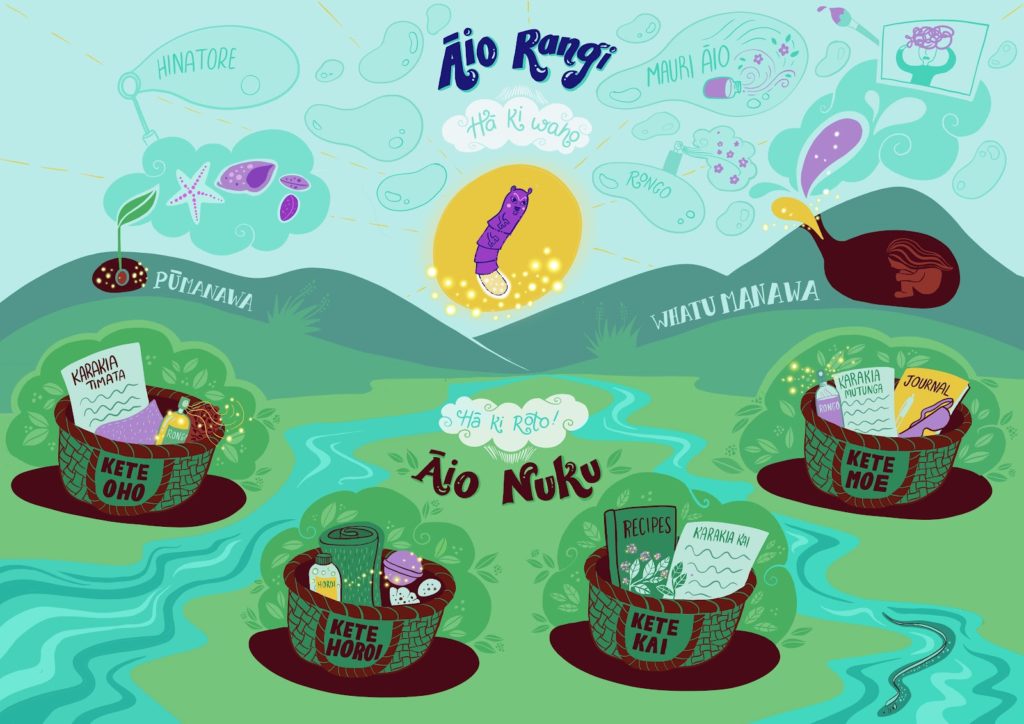30 Jun Mokopuna Korikori: The potential of culturally empowered play
Tākaro Māori and culturally-empowered play allows tamariki to have fun and connect while developing self-regulation skills, resilience and mauri ora. Mokopuna Korikori, a kaupapa developed in partnership between Toi Tangata and ACC has been exploring what this can look like.
Working alongside six whānau in the Kahungunu rohe, Toi Tangata kaiārahi, Crystal Pekepo-Ratu and Hiraani Hutana have spent the last eight months testing concepts around the use of pūrākau, kōrero tuku iho, and ‘Weaving play into the rhythm of the Pā Harakeke.’
“These concepts, based on mātauranga Māori, have enabled us to observe and listen to whānau about how we can set and create an environment that stimulates unstructured, organic play,” says Crystal. “In return, we can see how it strengthens the Whatumanawa and Pūmanawa with the aspirations of these positive experiences to enhance the Mauri within the tamaiti and the mokopuna that projects positive attributes of Ihi, Wehi and Wana.”
Using pūrākau and creation stories, participating whānau were guided on a journey of understanding neuroscience (including concepts such as reptilian, mammalian and neocortex).
“The pūrākau, ‘Noho tatapū’ (Mahi a Atua), allowed whānau to feel safe to open themselves up by identifying their role as a parent through the characteristics of Atua,” Crystal explains.
“Using the pūrākau of Hineahuone “Mai te uhā o te wahine”, context was given to the whakapapa of our existence as Tangata Whenua as well as the anatomy and characteristics gifted from ngā Atua Māori that exist within us today.”
The wānanga explored deeper understandings of the elements that inform Te Tuākiritanga (identity). Te Whatumanawa and Pūmanawa were among the kaupapa explored that related to tamariki development and whānau lived experiences.
“Ihi Wehi Wana was a wānanga kōrero shared to delve into moments when parents’ fear can impact on tamariki to explore their curiosity,” says Crystal. “This kōrero allowed us to explore Ihi Wehi Wana safely while informing us of positive attributes of Mana.”
Another concept, Mauri Āio, was a prototype based around exploring grounding rituals in the home as well as narratives pertaining to Atua, pūrākau and Tāiao. Whānau were provided with prototype kete that included taonga and taputapu related to key times of the day such as – Wā Oho (waking time), Wā Kai (meal time), Wā Hōroi (bath time) and Wā Moe (bed time). These kete were then extended on by whānau which included kete for each kaupeka (season) of the year.
“Whānau were able to share their aspirations through the lens of an Atua and how they not only envision their tamariki to be nurtured, but the attributes they see within their tamariki,” says Crystal.
“The opportunity to lead and explore this amazing kaupapa has been a highlight for me. We have learned so much from our whānau and continue to learn to shape effective kaupapa that support whānau and tamariki.”Toi Tangata would like to take this opportunity to thank the whānau who participated in the Mokopuna Korikori kaupapa. We would also like to thank our prototype partners, ACC Investment team, South Seas, Methodist Mission and the creative team from The Southern Initiative.








